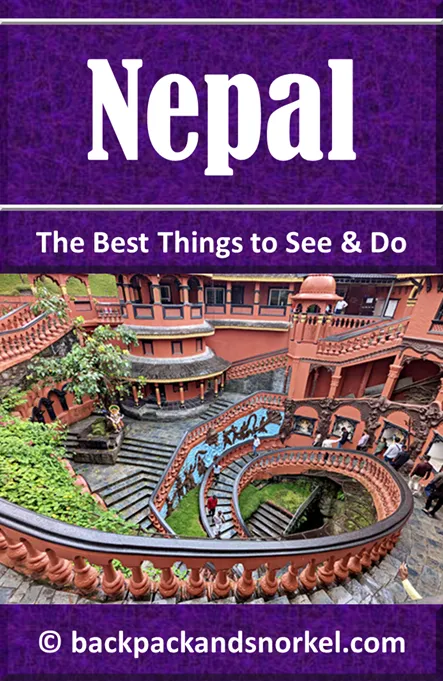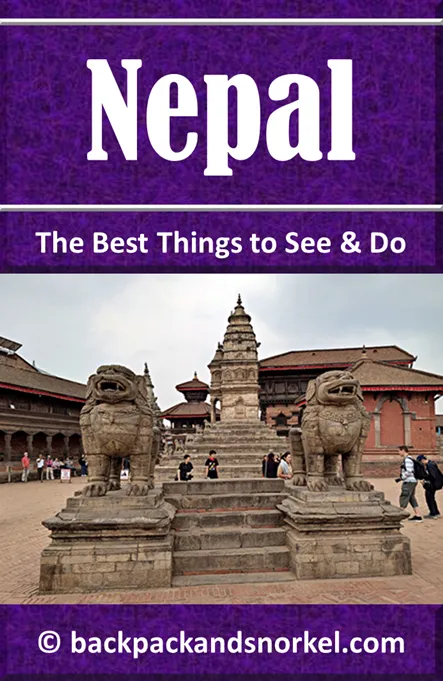Kumari Ghar: The Home of Kathmandu's Living Goddess in Durbar Square - Nepal Purple Travel Guide
(map, reviews)
This is Premium Content! To access it, please download our
Backpack and Snorkel Purple Travel GuideNow walk back to the white Gaddi Baihak building where you started your tour of Kathmandu Durbar Square, and keep walking a few feet more until the road makes a sharp left and turns into a plaza. The building before you is Kumari Ghar.
Kumari Ghar is not just a building – it is the living heart of a centuries-old tradition that continues to define Kathmandu's spiritual identity.
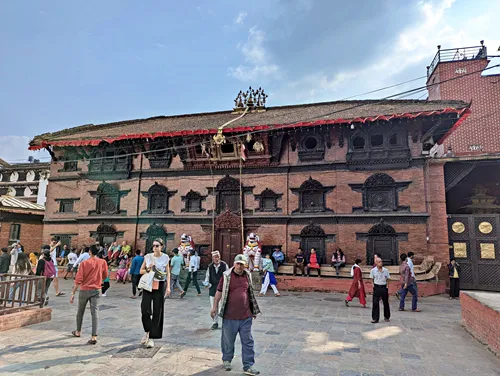
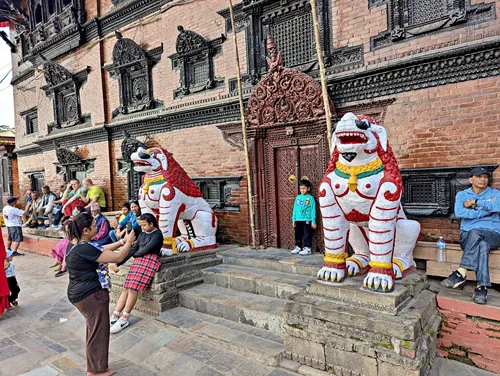

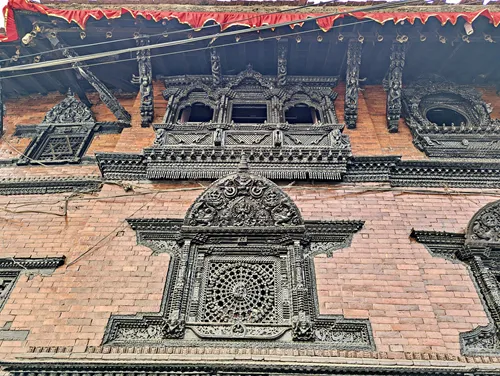
Here at Backpack and Snorkel Travel Guides, we typically promote self-guided walking tours.
But we realize that not everybody likes to walk by themselves in a foreign city. So, just in case that you rather go with ab guide: NO PROBLEM! Please see the Viator tours below.
free GuruWalk tours
paid Viator tours
Origin of the name Kumari Ghar
The name ‘Kumari Ghar’ literally means ‘House of the Kumari’ in Nepali. ‘Kumari’ refers to a virgin girl, chosen from the Newar Shakya caste, who undergoes a rigorous selection process to become the living goddess. ‘Ghar’ simply means ‘house’. The building serves as both her home and temple, where she lives in semi-seclusion and receives daily worship from priests and devotees.
Historical and Cultural Background of the Kumari Ghar
The tradition of worshipping a living goddess is centuries old, rooted in the 17th century during the reign of King Jay Prakash Malla, who is said to have established the practice after an encounter with the goddess Taleju. The current Kumari Ghar was built in 1757 by King Jaya Prakash Malla, and its architecture reflects the intricate beauty of traditional Newar craftsmanship.
A few stops ago, you learned about the connection of Kumari with Taleju Bhawani Temple.
More about the Kumari
The Kumari is a unique and deeply significant tradition in Nepal, particularly within the Kathmandu Valley. Here's a breakdown of the key aspects:
Living Goddess
The Kumari is a young, prepubescent girl who is worshipped as the living embodiment of the Hindu goddess Durga or Taleju.
She is considered a living deity, a manifestation of divine feminine energy.
Selection
The Kumari is traditionally selected from the Shakya clan of the Newar Buddhist community.
The selection process is rigorous, involving strict criteria and examinations.
These criteria include physical perfection, astrological compatibility, and the ability to remain calm during tests.
Role and Life
The Kumari resides in the Kumari Ghar, a palace in Kathmandu.
She is revered by both Hindus and Buddhists.
Her feet are not allowed to touch the ground, and she is carried in a palanquin (a box-like structure that is borne on the shoulders of human carriers, using poles that run lengthwise).
She makes appearances during certain religious festivals and ceremonies.
Once the Kumari reaches puberty, she returns to being a normal girl.
Cultural Significance
The Kumari tradition is a unique blend of Hindu and Buddhist beliefs.
It highlights the importance of female divinity in Nepali culture.
It is a deeply respected and revered tradition.
Origin
Legends about the origin of the Kumari tradition are often linked to the Malla kings of Kathmandu.
Architectural Features of the Kumari Ghar
Kumari Ghar is a three-story courtyard building constructed in red brick and decorated with exquisitely carved wooden windows and balconies. The facade facing Durbar Square is especially striking, with rows of finely detailed lattice windows and carved doorways. The interior courtyard is accessible to visitors, and if you're lucky, you might catch a brief appearance of the Kumari, who sometimes looks down from a window - though photography is strictly prohibited when she does.
The architecture is a fine example of Malla-era palace design, blending religious symbolism with residential space.
Use and Cultural Significance of the Kumari Ghar
Kumari Ghar is the spiritual and ceremonial heart of the Kumari tradition. The Kumari rarely leaves the residence, except for special festivals such as Indra Jatra, when she is paraded through the streets in a chariot and worshipped by thousands, including the highest officials of Nepal.
Inside the Ghar, she performs daily rituals and blessings for those deemed worthy, often including pilgrims and royal family members. Her blessings are believed to bring good fortune and protection.
This tradition uniquely blends Hinduism and Buddhism, making the Kumari an emblem of syncretic spirituality in the Kathmandu Valley.
The building interiors are reserved for the Kumari’s assistants and invited guests, and off-limits to visitors. The only exception is the inner courtyard with its beautiful ornate wooden windows and paneling. You will need to buy an extra ticket to visit the inner courtyard. While photography is allowed in the inner courtyard, taking a photo of the Kumari when she makes a brief appearance at one of the windows is strictly prohibited.
Back to your self-guided tour
Author: Rudy at Backpack and Snorkel
Bio: Owner of Backpack and Snorkel Travel Guides. We create in-depth guides to help you plan unforgettable vacations around the world.
Other popular Purple Travel Guides you may be interested in:
Like this Backpack and Snorkel Purple Travel Guide? Pin these for later:

